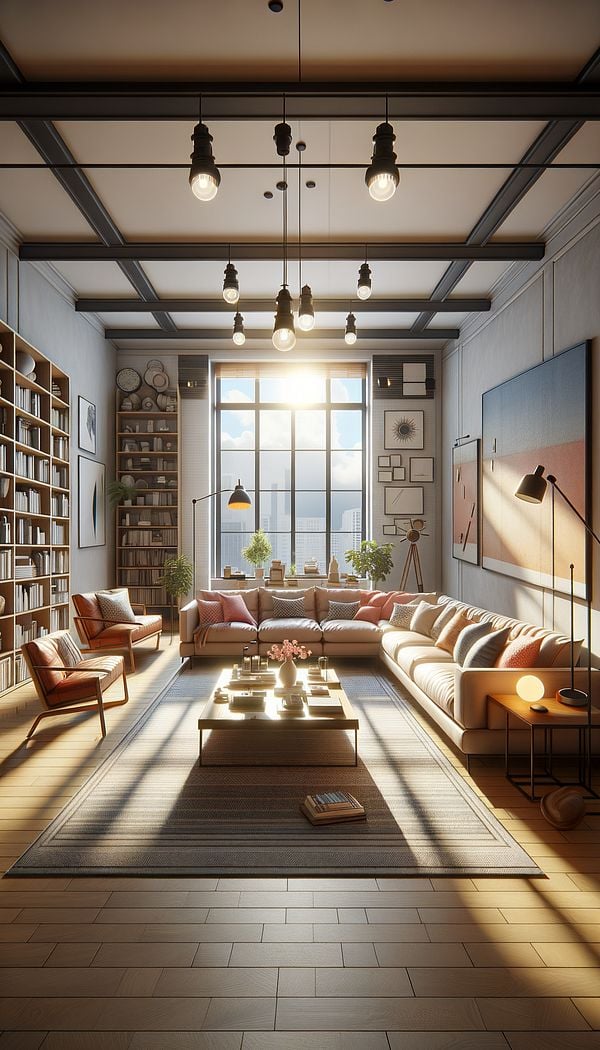What is Illuminance?
Illuminance is the measure of how much light falls on a surface.
Description
Illuminance plays a foundational role in the functional and aesthetic aspects of interior design. It refers to the total luminous flux incident on a surface, per unit area. Expressed in lux (lumens per square meter) or foot-candles (lumens per square foot), illuminance quantifies the amount of visible light present in a given space or falling upon a surface, such as a desk or countertop. Understanding and controlling illuminance is crucial because it affects how colors, textures, and even the size of a space are perceived.
Beyond mere perception, proper management of illuminance can significantly impact the functionality of a space. For instance, areas designated for reading or intricate tasks require higher levels of illuminance compared to spaces meant for relaxation. Furthermore, harmonizing natural and artificial lighting to achieve optimal illuminance levels can enhance mood, increase productivity, and even conserve energy. By carefully planning the illuminance in interior spaces, designers ensure that areas are well-lit, comfortable, and suited to their intended uses.
Usage
Interior designers often calculate the required illuminance levels for different spaces within a home or commercial setting. For example, a kitchen might require higher illuminance for safety and functionality during food preparation, whereas a bedroom might have lower illuminance levels to promote relaxation. Architects and lighting engineers work together to consider the natural illumination from windows and add appropriate artificial lighting fixtures to achieve desired illuminance levels.
FAQs
-
How is illuminance measured?
Illuminance is measured in lux (lumens per square meter) or foot-candles (lumens per square foot), depending on the metric or imperial system of measurement.
-
Why is illuminance important in interior design?
Illuminance is vital for ensuring that interior spaces are adequately lit, enhancing the functionality and aesthetics of a space, and improving mood and productivity.
-
Can illuminance affect the appearance of colors inside a room?
Yes, the level of illuminance in a room can significantly affect the appearance of colors, making them appear brighter or more subdued depending on the light levels.
Practical Application
To apply the concept of illuminance effectively in interior design, consider the purpose of each space and the tasks that will be performed there. Utilize a combination of natural and artificial lighting to achieve the desired level of illuminance, aiming for a balance that enhances the room’s functionality and aesthetic appeal. Regularly evaluate the space at different times of the day to ensure that the lighting remains suitable for its intended use.
-
Lighting111 articles
-
Space Planning & Layout134 articles
-
Decorating Principles & Elements330 articles
-
Lay OffLay off is the process of applying a final, very thin coat of paint or varnish in a specific manner to ensure a smooth finish.
-
MoiréMoiré is a unique visual phenomenon produced by the superimposition of two or more sets of fine patterns or grids.
-
BobecheA decorative element that surrounds the base of a candle or candelabra to catch wax drippings.
-
TuscanTuscan refers to a design style inspired by the Tuscany region in Italy.
-
ChifforobeA chifforobe is a piece of furniture that combines a wardrobe with a chest of drawers.
